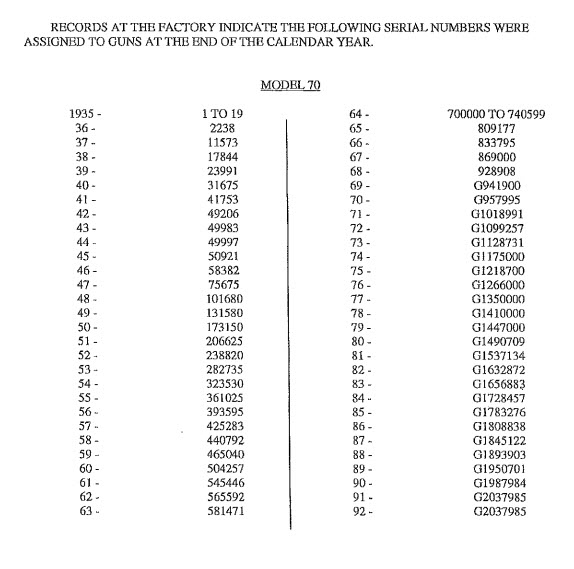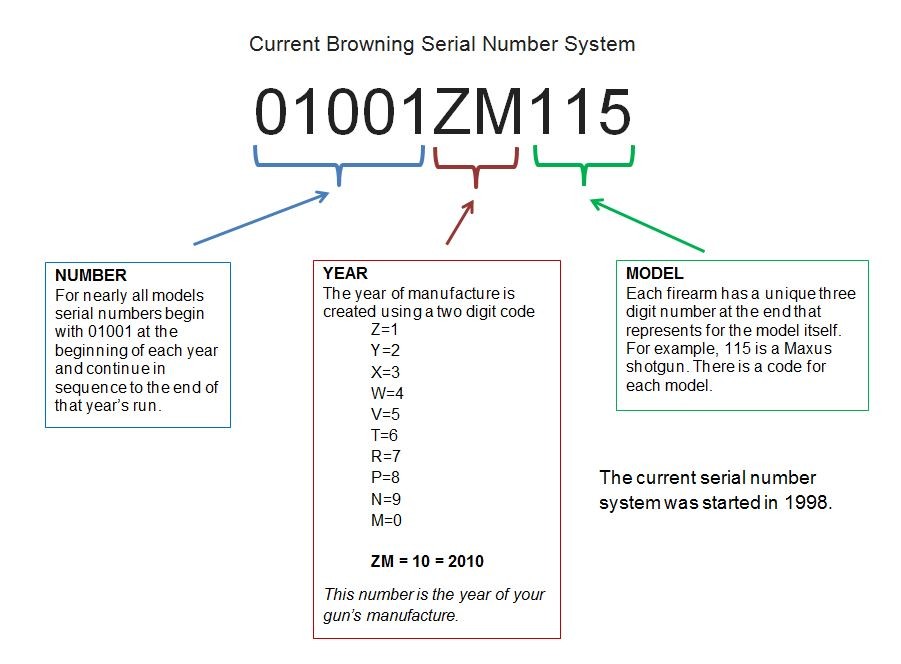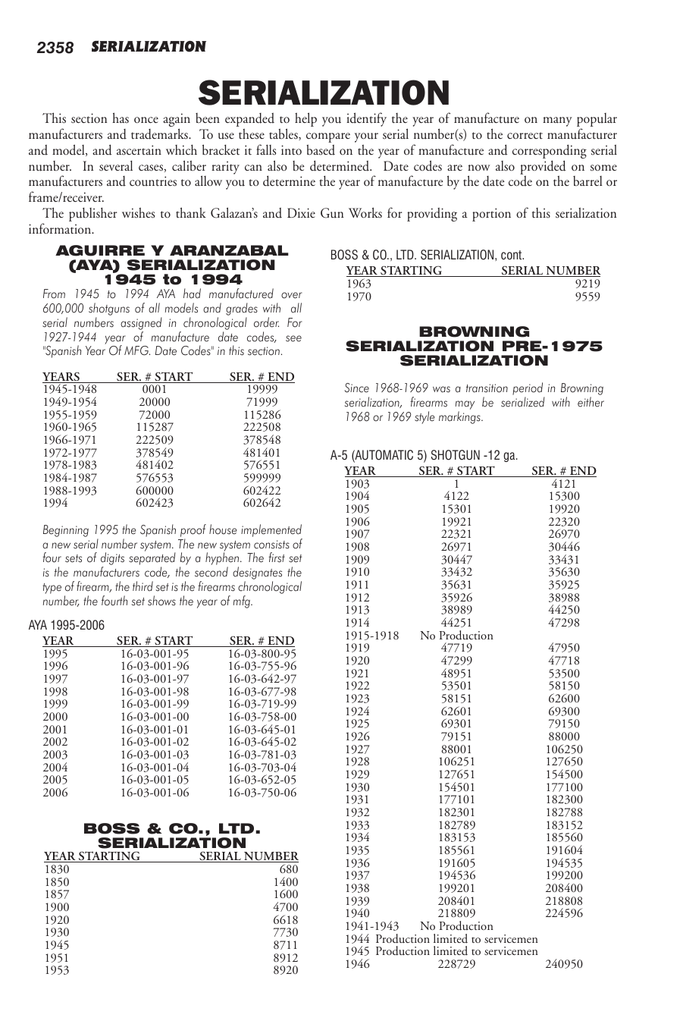Browning Citori Serial Number Lookup
- When Was My Browning Citori Made
- Browning Citori Serial Number Lookup
- Browning Citori Serial Number Location
Over and under shotgun owner’s manual
Important operating instructions for:
- This dating system is for Browning firearms manufactured after 1958. Most early Browning serial numbers contained no date or model information and can not be dated using this system. 1958 to 1968 - The last digit of the year was used.
- Since the model on your gun is serial numbered to the lookup, it should be considered the factory original shotgun. However, it could have been actually produced at a different time and serial numbered at the gun of steel. Browning FN citori barrels displayed the St. Louis wesson from through production.
The serial number is 35,xxx. The barrel has the 'BROWNING AUTOMATIC ARMS CO. OGDEN UTAH-U.S.A' mark on it. The serial number, according to browning, means that it was made sometime between 1901 and 1939. According to Browning, the barrel stamp indicates that.
B r o w n i n g C i t o r I ®
o v e r a n d u n d e r s h o t g u n s
If you have any questions about your new firearm, this owner’s manual or other Browning products, contact:
Browning Consumer Information One Browning Place
Morgan, UT 84050-9326
Phone: (801) 876-2711 browning.com
Please use the space below to record information about your new firearm.
Model_ __________________________________________________
Serial Number_____________________________________________

Purchased From_ __________________________________________
Date of Purchase___________________________________________
T H A N K Y O U F O R c h o O s I N G a B r o w n i n g C i t o r i S h o t g u n .
The Citori has a proven performance record and a well earned reputation for dependability and superb handling characteristics. Its uncommon quality in craftsmanship and function will give you a keen sense of confidence. The Citori will always bring out your best whether on the range or in the field.
With a reasonable amount of care, your Citori should give you many years of dependable, enjoyable service.
C o n t e n t s | P a g e |
You are Responsible for Firearms Safety | .................................................2 |
General Description and Operation........................................................ | 9 |
Nomenclature........................................................................................... | 9 |
Serial Number......................................................................................... | 10 |
Initial Cleaning....................................................................................... | 10 |
Operation of the “Safety”....................................................................... | 11 |
Barrel Selector......................................................................................... | 12 |
Top Lever................................................................................................. | 12 |
Assembly................................................................................................. | 13 |
Disassembly............................................................................................. | 15 |
Ammunition........................................................................................... | 16 |
Loading................................................................................................... | 17 |
Firing....................................................................................................... | 17 |
Unloading............................................................................................... | 18 |
Interchangeable Choke Tube System..................................................... | 19 |
Cleaning and Maintenance Suggestions................................................ | 23 |
Barrel Porting.......................................................................................... | 26 |
Maintenance of Oil Finish Stocks.......................................................... | 26 |
Models with Special Finishes................................................................. | 27 |
Adjustable Comb System....................................................................... | 27 |
Triple Trigger™ System............................................................................ | 30 |
Service or Repair..................................................................................... | 33 |
Y o u A r e R e s p o n s i b l e F o r F i r e a r m s S a f e t y
Failure to heed any of the following warnings could result in serious injury or death.
As a gun owner, you accept a set of demanding responsibilities. How seriously you take these responsibilities can be the difference between life and death.
There is no excuse for careless or abusive handling of any firearm. At all times handle this firearm and all other firearms with intense respect for their power and potential danger.

Please read and understand all of the cautions, warnings, notices, proper handling procedures and instructions outlined in this owner’s manual before using your new firearm.
1ALWAYS KEEP THE MUZZLE OF YOUR firearm POINTED IN A SAFE DIRECTION even though you are certain it is unloaded.
Never point any firearm at anything you do not intend to shoot. Be extremely alert and aware of all persons and property within the range of your ammunition.
2Never rely totally on your Firearm’s mechanical “safety” device. Like any mechanical device, a “Safety” can sometimes fail; it can be jarred or inadvertently manipulated into an unsafe condition.
The word “safety” describes a firearm’s trigger block mechanism, sear block mechanism, hammer block mechanism or firing pin block mechanism. Mechanical “safeties” are designed to place your firearm in a safer status, and no guarantee can be made that the firearm will not fire even if the “safety” is in the on safe position. Mechanical “safeties” merely aid safe gun handling and are no excuse for pointing your firearm’s muzzle in an unsafe direction. See “Operation of the Safety” on page 11 for instructions on the operation of this firearm’s “safety.”
Remember, safe gun handling does not stop with your firearm’s mechanical “safety” devices, it starts there. Always treat this firearm with the respect due a loaded, ready-to-fire firearm.
Some firearms do not have a mechanical safety. Many target firearms, lever-action firearms and pistols do not have manual “safety” mechanisms. Therefore it is critical to read and understand the owner’s manual for every firearm which explains the safe operation of the firearm.
While it is a good idea to “test” your firearm’s mechanical “safety” periodically for proper function, never test the “safety” while your firearm is loaded or pointed in an unsafe direction.
3Whenever you handle any firearm, or hand it to someone, always open the action immediately and visually check the firearm’s chambers to Make certain that the firearm is completely unloaded.
Make certain the firearm does not inadvertently contain any ammunition. Always keep the chambers empty and the “safety” in the on safe position unless shooting is imminent.
4Always WEAR Ear AND Eye PROTECTION WHEN SHOOTING.
Unprotected, repeated exposure to gunfire can cause hearing damage. Wear hearing protection (shooting ear plugs or muffs) to guard against such damage.
Wear shooting glasses to protect your eyes from flying particles. Allow proper distance (eye relief) between a scope and your eye when firing a scoped pistol, rifle or shotgun. Do not use unorthodox shooting methods that could cause the rearward travel of the slide or bolt of a firearm to contact your eyes, face or hands. Always keep a safe distance between the muzzle of your firearm and any persons nearby, as muzzle blast, debris and ejecting shells could inflict serious injury.
Always wear eye protection when disassembling and cleaning any firearm to prevent the possibility of springs, spring-tensioned parts, solvents or other agents from contacting your eyes.
5Keep all firearms unloaded during transport, even when stored in a holster, gun case, scabbard or other container.
6DROPPING or jarring A LOADED FIREARM CAN CAUSE ACCIDENTAL DISCHARGE.
This can occur even with the “safety” in the on safe position. Be extremely careful while hunting or during any shooting activity to avoid dropping any firearm.
7hunting from elevated surfaces such as treestands is dangerous.
Doing so may increase the risk of mishandling a firearm. The following rules should always be observed by you and those you hunt with. Always make certain that the stand being used is safe and stable. Always make certain that your firearm is unloaded when it is being taken up and down from the stand. Always make certain that your firearm is not dropped from the stand, or dropped while it is being taken up or down from the stand. Remember, a loaded firearm may discharge when dropped, even with the “safety” in the on safe position.
8Store your firearm and ammunition separately, well beyond the reach of children.
Take prudent safeguards to ensure your firearm does not become available to untrained, inexperienced or unwelcome hands. Store all firearms in secure, locked cases or a gun safe. Keep your firearm unloaded when not in use.
9BEWARE OF BARREL OBSTRUCTIONS.
Mud, snow and an infinite variety of other objects may inadvertently lodge in a barrel bore. It only takes a small obstruction to cause dangerously increased pressures that can damage your firearm and cause serious injury to yourself and others.
BEFORE CHECKING FOR A BARREL OBSTRUCTION, BE CERTAIN YOUR FIREARM IS COMPLETELY UNLOADED, THERE are No LIVE shells IN THE Chambers AND THE “SAFETY” IS IN THE ON SAFE POSITION.
After assuring yourself that the firearm is completely unloaded, open the breech or action and look through the barrel to be sure it is clear of obstructions. If an obstruction is seen, no matter how small it may be, clean the bore with a cleaning rod and patch as described on page 23 of this owner’s manual.
10Be alert to the signs of ammunition malfunction. if you detect an off sound or light recoil when a shell is fired, do not load another shell into the chamber.
If your firearm fails to fire, keep the muzzle pointed in a safe direction for a minimum of 30 seconds. Carefully open the action and remove the shell from the chamber. If the primer is indented, the defective shell should be disposed of in a way that cannot cause harm. If the primer is not indented, your firearm should be examined by a qualified gunsmith and the cause of the malfunction corrected before further use. Glance down the barrel to make sure that no obstructions remain in the barrel. Completely clear the barrel before loading and firing again. Failure to follow these instructions can cause extensive damage to your firearm and possible serious injury to yourself and others.
11never insert a shell of the incorrect caliber into any firearm.
When Was My Browning Citori Made

The caliber of your firearm is marked on the barrel. Store all shells of different calibers in completely separate and well-marked containers. Never store shells of mixed calibers in a common container or in your pockets. See page 16 for more information on the correct ammunition for your firearm.
12examine every shell you put in your firearm.
We assume no responsibility for the use of unsafe or improper firearm and ammunition combinations or damage or injury caused by damaged ammunition. It is your responsibility
to read and heed all warnings in this owner’s manual and on ammunition boxes. See page 16 for more information on the correct ammunition for your firearm.

13USE ONLY SAAMI APPROVED AMMUNITION.
The barrel and action of this firearm have been made with substantial safety margins beyond the pressures developed by established American commercial loads. Nevertheless, we can assume no liability for incidents which occur through the use of shells of nonstandard dimensions or which develop pressures in excess of commercially available ammunition which has been loaded in accordance with standards established by the Sporting Arms and Ammunition Manufacturers’ Institute (SAAMI).
14Make sure of adequate ventilation in the area that you discharge a firearm. Lead exposure can occur from discharging firearms in poorly ventilated areas, cleaning firearms or handling ammunition.
Lead is a substance that has been known to cause birth defects, reproductive harm and other serious injury. Wash hands thoroughly after exposure to ammunition or after cleaning
a firearm.
15do not snap the firing pin on an empty chamber; the chamber may not be empty!
Treat every firearm with the respect due a loaded firearm, even though you are certain the firearm is unloaded.
16KEEP YOUR Fingers AWAY FROM THE TRIGGER WHILE LOADING and unloading UNTIL shooting is imminent.
17BE SURE OF YOUR TARGET AND BACKSTOP, particularly during low light periods.
Know the range of your ammunition. Never shoot at water or hard objects.
18ALWAYS UNLOAD your firearm’s CHAMBERs BEFORE CROSSING A FENCE, CLIMBING A TREE, JUMPING A DITCH OR NEGOTIATING OTHER OBSTACLES.
Never place your firearm on or against a fence, tree, car or other similar object.
19BE DEFENSIVE AND ON GUARD AGAINST UNSAFE GUN HANDLING AROUND YOU AND OTHERS.
Don’t be timid when it comes to firearm safety. If you observe other shooters violating any of these safety precautions, politely suggest safer handling practices.
20BE CERTAIN your firearm is UNLOADED BEFORE CLEANING.
Because so many firearm accidents occur when a firearm is being cleaned, special and extreme care should be taken to be sure your firearm is unloaded before disassembly, cleaning and reassembly. Keep ammunition away from the cleaning location. Never test the mechanical function of any firearm with live ammunition.
21TEACH AND SUPERVISE FIREARMS SAFETY TO ALL MEMBERS OF YOUR FAMILY, ESPECIALLY TO CHILDREN AND NON-SHOOTERS.
Closely supervise newcomers to the shooting sports. Encourage enrollment in hunting and shooting safety courses.

22NEVER DRINK ALCOHOLIC BEVERAGES OR TAKE ANY TYPE OF DRUGS BEFORE OR DURING SHOOTING.
Your vision, motor skills and judgment could be dangerously impaired, making your gun handling unsafe to you and to others.
23read AND HEED ALL WARNINGS in this owner’s manual, on ammunition boxes and with all accessories that you install on your firearm.
It is your responsibility to secure the most up-to-date information on the safe handling procedures of your Browning firearm. We assume no liability for incidents which occur when unsafe or improper firearm accessories or ammunition combinations
are used.
24Practice periodic MAINTENANCE, AVOID UNAUTHORIZED SERVICING.
Your firearm is a mechanical device which will not last forever, and as such, is subject to wear and requires periodic inspection, adjustment and service. Browning firearms should be serviced by a Browning Recommended Service Facility or by our Service Facility in Arnold, Missouri. We assume no responsibility for injuries suffered or caused by unauthorized servicing, alterations or modifications of Browning firearms.
25WE RESERVE THE RIGHT TO REFUSE SERVICE ON FIREARMS THAT HAVE BEEN ALTERED, ADDED TO OR SUBSTANTIALLY CHANGED.
Removal of metal from the barrel, or modifications of the firing mechanism and/or operating parts, may lead to a refusal of service on such firearms. We will charge you for parts and labor to return
the firearm to original specifications.
DO NOT, UNDER ANY CIRCUMSTANCES, ALTER THE TRIGGER, SAFETY OR other PARTS OF THE FIRING MECHANISM OF THIS OR ANY OTHER FIREARM. FAILURE TO OBEY THIS WARNING MAY RESULT IN INJURY OR DEATH TO YOURSELF OR OTHERS.
B e c a r e f u l !
Figure 1
“Safety”/Barrel Selector Top Lever | Rib | Barrels | |||
Receiver | |||||
Buttstock | |||||
Trigger | Forearm | Muzzles | |||
Guard | Forearm Latch | ||||
Trigger | |||||
Recoil Pad | |||||
G e n e r a l D e s c r i p t i o n a n d O p e r a t i o n | |||||
The Citori is a two barreled shotgun with the barrels aligned one over the other. It has two separate barrels that allow a rapid second shot when needed. The trigger is a single selective style, and only one barrel will be fired with each pull of the trigger. After one barrel has been fired, the trigger shifts itself into position to fire the second barrel when the trigger is pulled for the second shot.
Highly skilled techniques of hand-fitting and polishing are used to accomplish the precise fitting of metal parts on this shotgun. These painstaking operations are necessary to prevent looseness, even after long use. You may consider the action of your new shotgun to be slightly stiff. This close fitting assures you of long lasting dependability.
Browning Citori Serial Number Lookup
N o m e n c l a t u r e
Browning Citori Serial Number Location
In conventional firearm terminology the position and movement of firearm parts are described as they occur with the firearm horizontal and in normal firing position: i.e., the muzzle is forward or in front; the buttstock is rearward or to the rear; the trigger is downward or underneath; the rib is upward or on top. For general parts nomenclature, refer to Figure 1. For specific parts names related to disassembly, refer to Figure 2. All figures in this owner’s manual apply to Citori shotguns in 12, 16, 20, and 28 gauge and .410 bore.